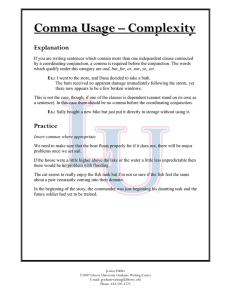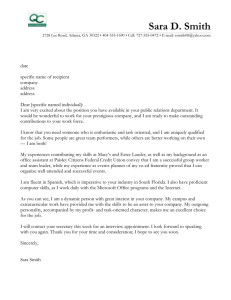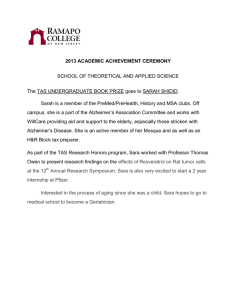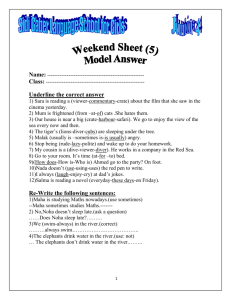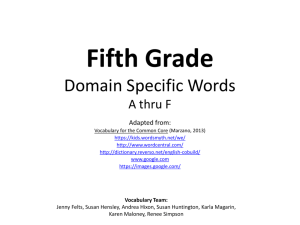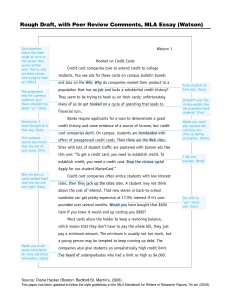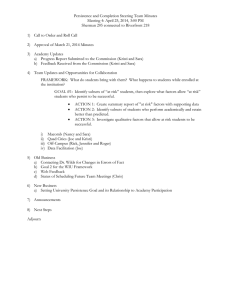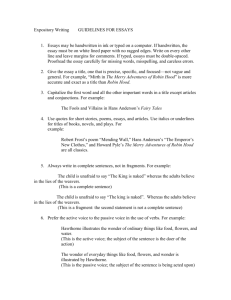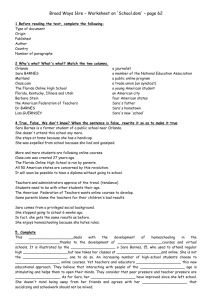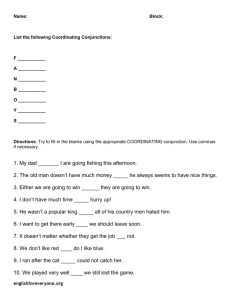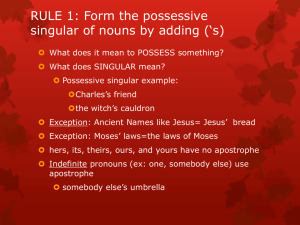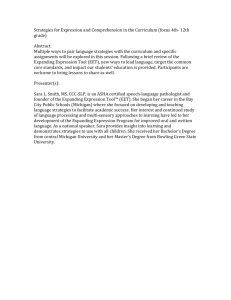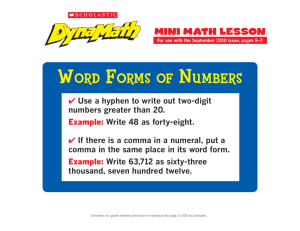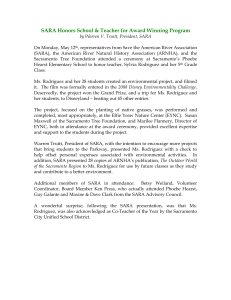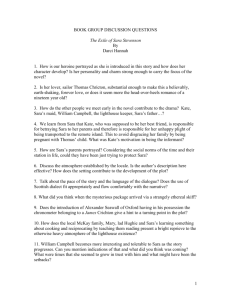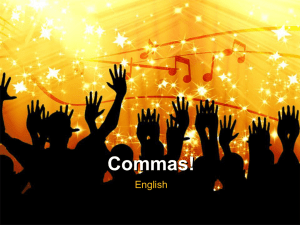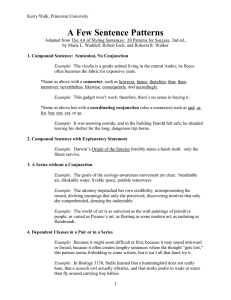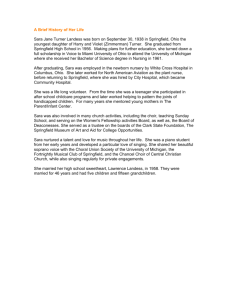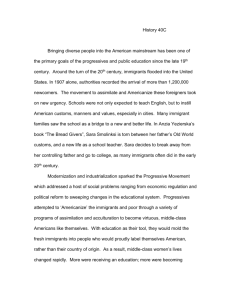The Six Main Uses of the Comma CCU Writing Center
advertisement
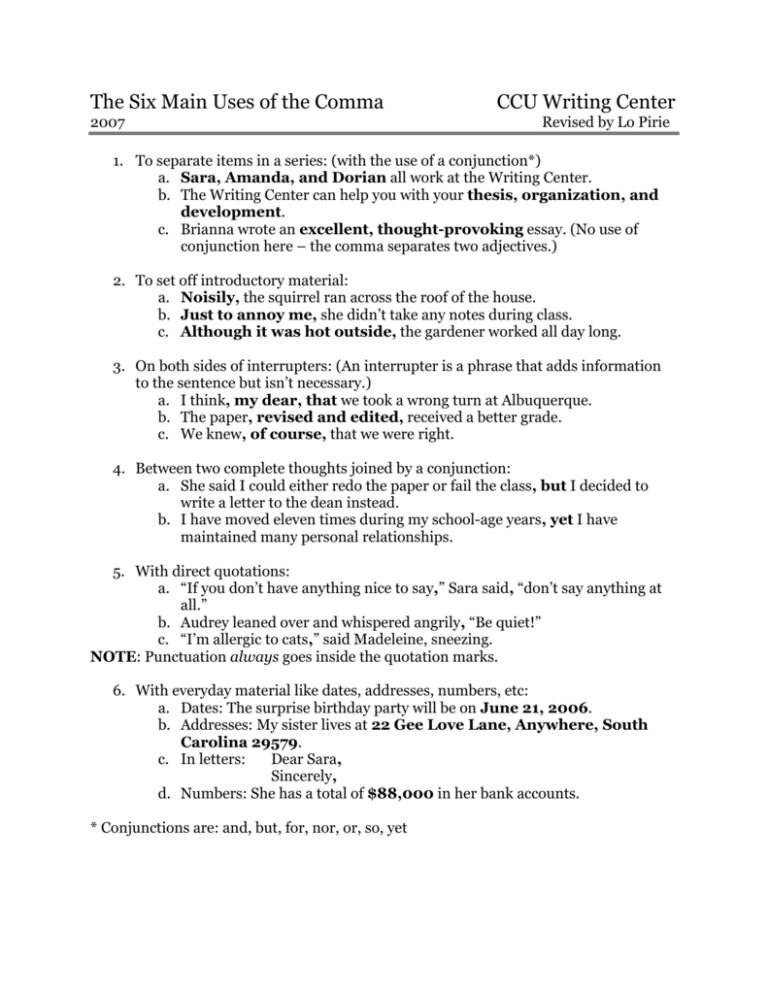
The Six Main Uses of the Comma 2007 CCU Writing Center Revised by Lo Pirie 1. To separate items in a series: (with the use of a conjunction*) a. Sara, Amanda, and Dorian all work at the Writing Center. b. The Writing Center can help you with your thesis, organization, and development. c. Brianna wrote an excellent, thought-provoking essay. (No use of conjunction here – the comma separates two adjectives.) 2. To set off introductory material: a. Noisily, the squirrel ran across the roof of the house. b. Just to annoy me, she didn’t take any notes during class. c. Although it was hot outside, the gardener worked all day long. 3. On both sides of interrupters: (An interrupter is a phrase that adds information to the sentence but isn’t necessary.) a. I think, my dear, that we took a wrong turn at Albuquerque. b. The paper, revised and edited, received a better grade. c. We knew, of course, that we were right. 4. Between two complete thoughts joined by a conjunction: a. She said I could either redo the paper or fail the class, but I decided to write a letter to the dean instead. b. I have moved eleven times during my school-age years, yet I have maintained many personal relationships. 5. With direct quotations: a. “If you don’t have anything nice to say,” Sara said, “don’t say anything at all.” b. Audrey leaned over and whispered angrily, “Be quiet!” c. “I’m allergic to cats,” said Madeleine, sneezing. NOTE: Punctuation always goes inside the quotation marks. 6. With everyday material like dates, addresses, numbers, etc: a. Dates: The surprise birthday party will be on June 21, 2006. b. Addresses: My sister lives at 22 Gee Love Lane, Anywhere, South Carolina 29579. c. In letters: Dear Sara, Sincerely, d. Numbers: She has a total of $88,000 in her bank accounts. * Conjunctions are: and, but, for, nor, or, so, yet
